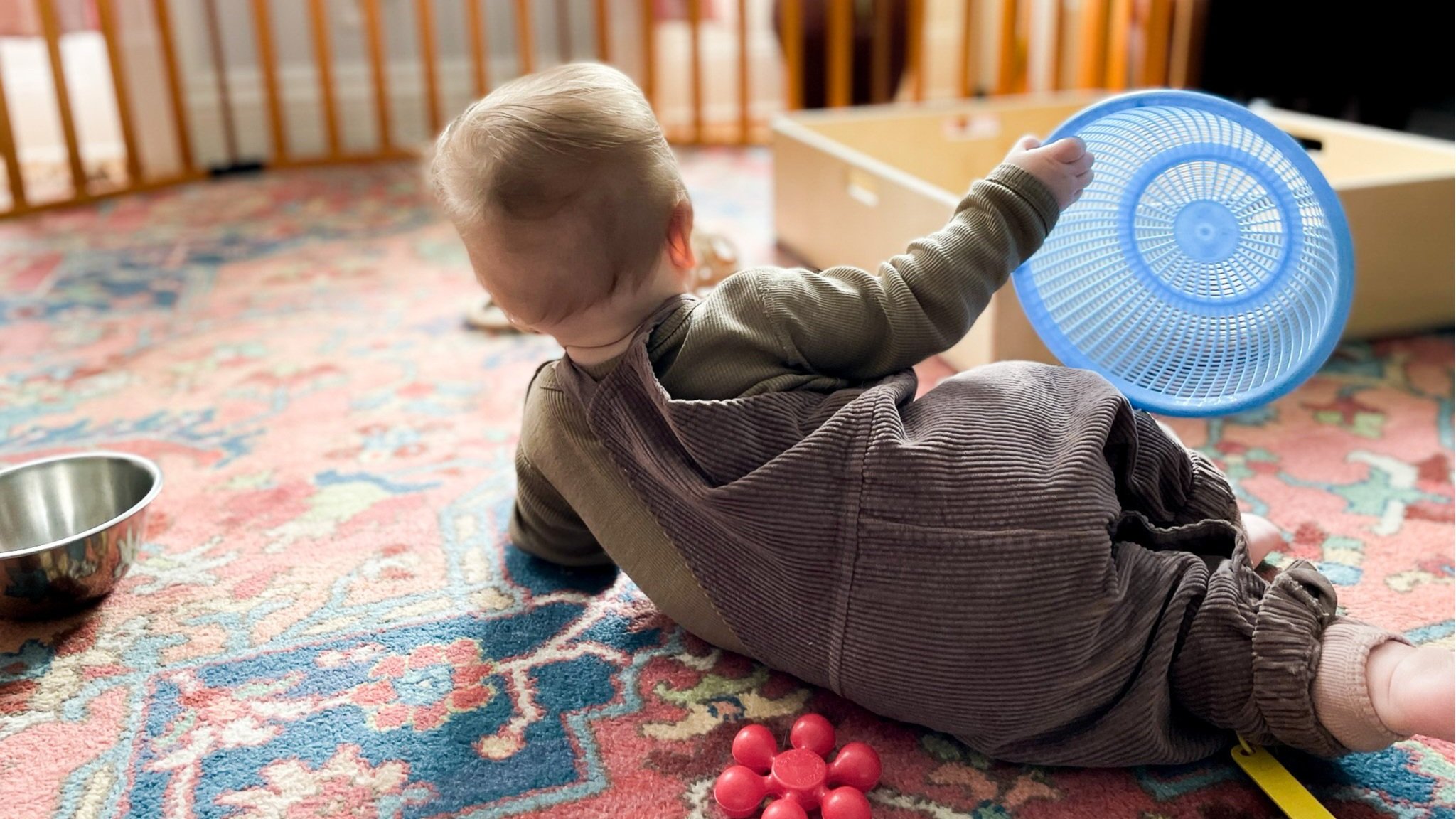Move Free
Free motor development – also known as self-initiated or natural motor development – refers to the practice of allowing infants to progress through the stages of motor development (meaning turning, rolling, crawling, sitting, standing, and walking) in the universal, sequential schema.
This is a big topic, and one which can be easily misunderstood without adequate information. So rather than jumping right into the deep end, let’s start in the wading pool ☺ and get our feet wet with the basics. When I’m talking about free movement in this article, I’m simply speaking about the idea of providing infants the opportunity to move and explore their environment without physical restraint or direction from adults. The concept of infant free movement is grounded in the belief that self-initiated movement and exploration play a crucial role in a child's physical, cognitive, and social-emotional development. Here's just a few of the positive effects of infant free movement:
Physical Development: Allowing infants to move freely helps in developing their motor skills, muscle strength, coordination, and balance. When infants are allowed to explore their environment, they engage in various movements like crawling, rolling, reaching, and eventually walking. These movements are essential for the development of their muscles and integration of their nervous system.
Cognitive Development: Free movement encourages sensory exploration and helps infants gather information about their surroundings. By touching, grasping, and interacting with objects, infants learn about textures, shapes, sizes, and spatial relationships. This hands-on learning aids in cognitive development and is vital for the formation of neural connections in the brain.
Sense of Self: When infants are allowed to move freely and make choices about their exploration, it fosters a sense of independence and self-confidence. They learn that their actions have consequences, and this sense of agency contributes to their emotional and psychological well-being.
Problem-Solving Skills: As infants explore their environment, they encounter obstacles and challenges that require problem-solving. For instance, they might need to figure out how to navigate through the labyrinth or how to reach an object just out of their grasp. These small, infant-sized challenges contribute to the development of their problem-solving and critical thinking skills.
Sensory Integration: Free movement exposes infants to various sensory experiences, including tactile, auditory, visual, and proprioceptive sensations. Engaging with these sensory inputs helps their brain develop the ability to process and integrate sensory information effectively.
Social Interaction: When infants move freely in a safe environment, they have opportunities to interact with caregivers, siblings, or other children. These interactions contribute to the development of social skills, communication, and emotional connections.
Emotional Regulation: Through free movement, infants learn to understand and regulate their emotions. They might explore different movements to express joy, frustration, curiosity, or other feelings. This contributes to their emotional intelligence and self-awareness.
Brain Development: During the first few years of life, the brain undergoes rapid development. Infant free movement provides the necessary sensory inputs and experiences that support the formation of neural connections, helping to lay the foundation for future learning and development.
Creativity and Imagination: Unrestricted movement allows infants to engage with materials in a myriad of ways, which is crucial for fostering creativity and innovative thinking later in life. Through movement and exploration, infants turn everyday objects into sources of wonder and inspiration.
Incorporating daily opportunities for free movement (both indoors and outdoors!) can be an immense source of joy and pleasure – not only for young children!


